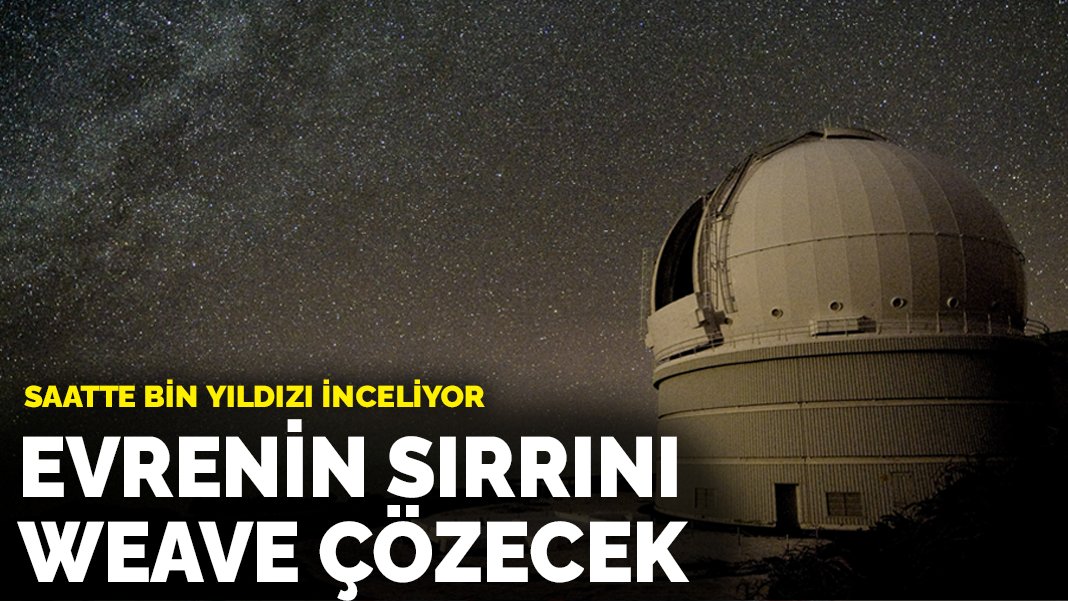Scientists who sent the James Webb Space Telescope to space to solve the secrets of the galaxy will this time scan 1000 stars thanks to a new device they have connected to one of the most powerful telescopes in the world, William Herschel. Researchers hope to reveal details about how the galaxy formed, thanks to the device called Weave.
Decision News Center
Scientists, who took a historic step to solve the secrets of the universe by sending the James Webb Space Telescope into space last year, this time left behind an important threshold to solve the formation of the universe from the earth.
Scientists hope to reveal the details of how our galaxy formed, thanks to a new device they attached to one of the world’s most powerful telescopes, William Herschel (WHT), located on the Spanish island of La Palma. Thus, the telescope will be able to scan 1000 stars per hour.
The device was developed over 10 years
Connected to the WHT, the super-fast mapping device will analyze the formation and velocity of each star. This will show how the Milky Way galaxy we live in was formed over billions of years.
Professor of Oxford University, who worked for more than 10 years to develop this device called Weave. Gavin Dalton says that they are very excited as a team to see their invention work, and a new adventure begins with the next step.
Weave’s robotic fingers guide thousands of optical fibers, each processing a star.
80 thousand pieces separately
The Weave device was loaded onto the WHT in La Palma in the Canary Islands to carry out its work. There are 80,000 separate parts of this engineering marvel.
In every area of the sky that WHT points to, astronomers locate thousands of stars. Weave’s robotic fingers also focus on the associated star by placing an optical fiber (tubes that light can direct) into each region in space. These fibers affect small telescopes, and each captures light from a single star and sends it to another vehicle.
This separates it into the rainbow spectrum, thus revealing the origin and history of the star.
The direction and age of the star will be calculated
All this is done in just one hour. After this process is completed, the optical fibers prepared at that time are mobilized for the next target.
There are as many as 400 billion stars in the spiral galaxy the Milky Way, which originally consisted of a smaller group of stars, growing over millions of years as it mingled with other dwarf galaxies and joined by stars from new galaxies.
Weave can calculate the speed, direction, age of the star it observes and builds a picture of the movement of stars in the Milky Way.
“We will be able to watch all galaxies”
prof. According to Dalton, with this invention, it will be possible to reveal the entire formation of the Milky Way in greater detail than has ever been seen before. “We’ll be able to track all the galaxies that have integrated into the Milky Way in cosmic time, and see how they form a new star,” Dalton said.
“We will find answers to our questions”
Working with WHT, Dr. Marc Balcells told the BBC that Weave will help us understand the formation of galaxies.
“For years it was said that we were in the golden age of astronomy,” said Balcelles, adding that there will be much more important developments in the future:
“Weave will answer questions that astronomers have been trying to answer for decades, such as, ‘How many pieces come together in the formation of a large galaxy and how many galaxies merged to form the Milky Way?'”
Project expert Dr. Cecilia Farina says Weave will find a lot of things they didn’t expect to find.Because the universe is full of surprises.“
–


